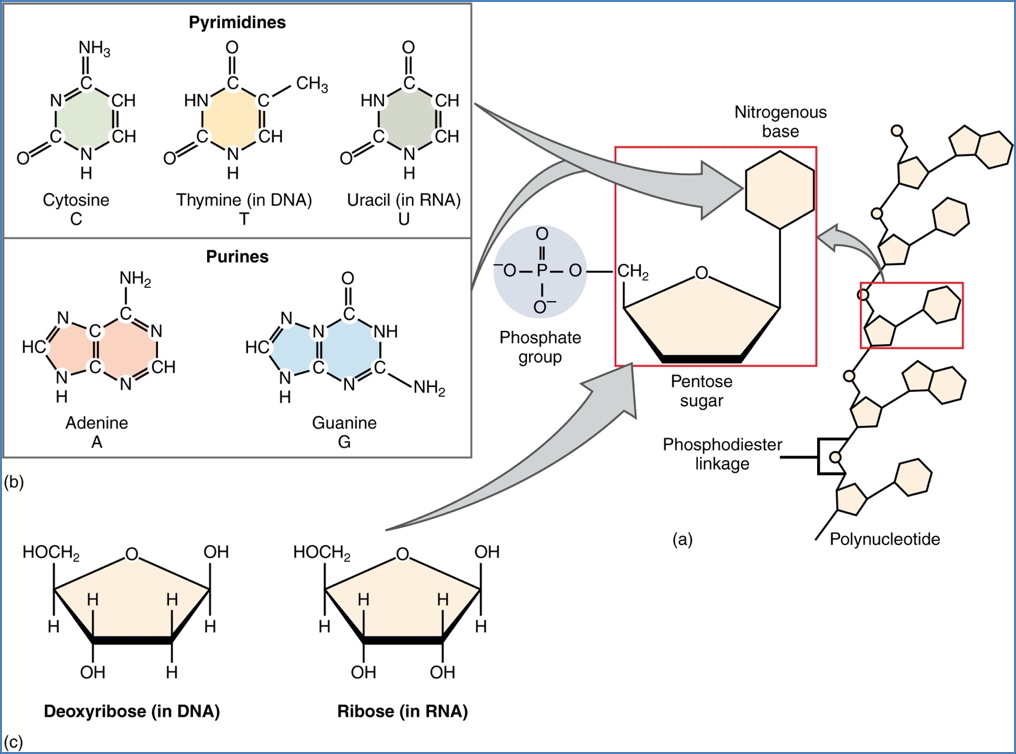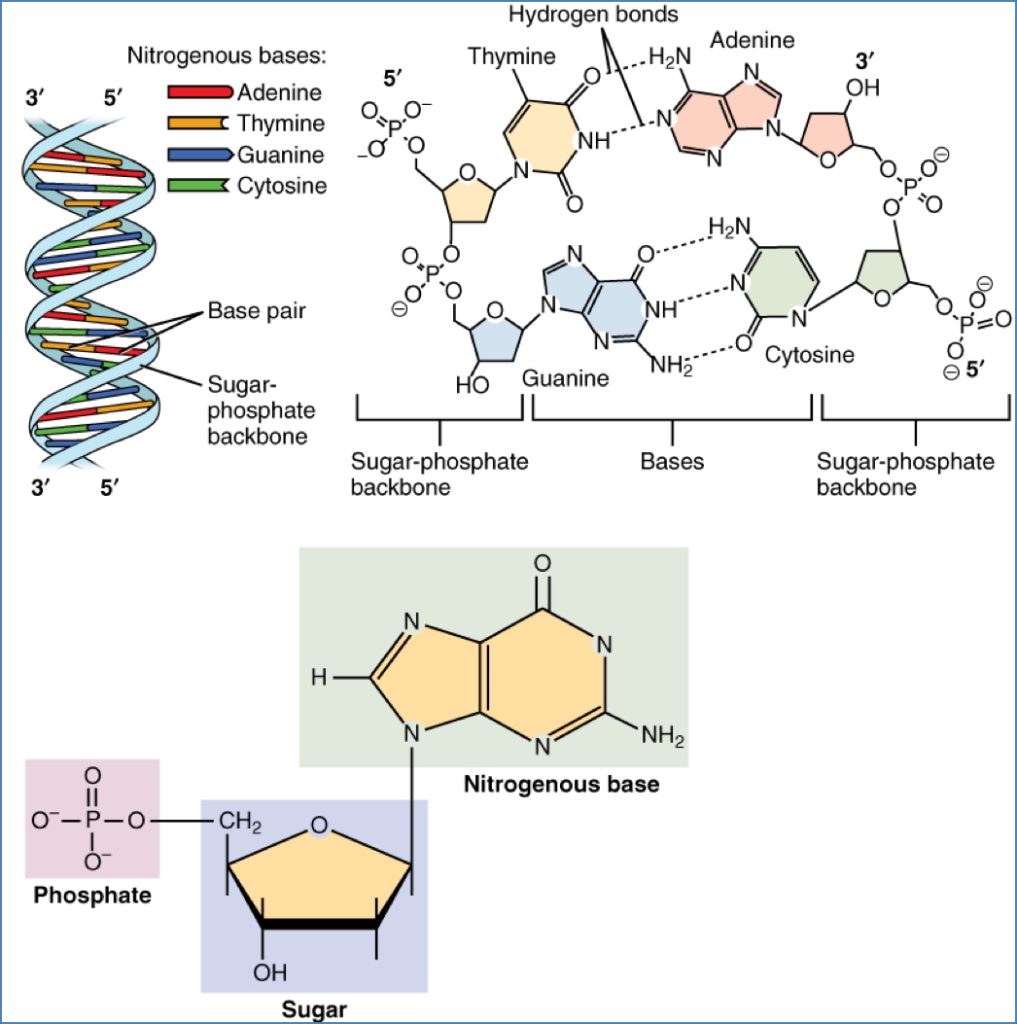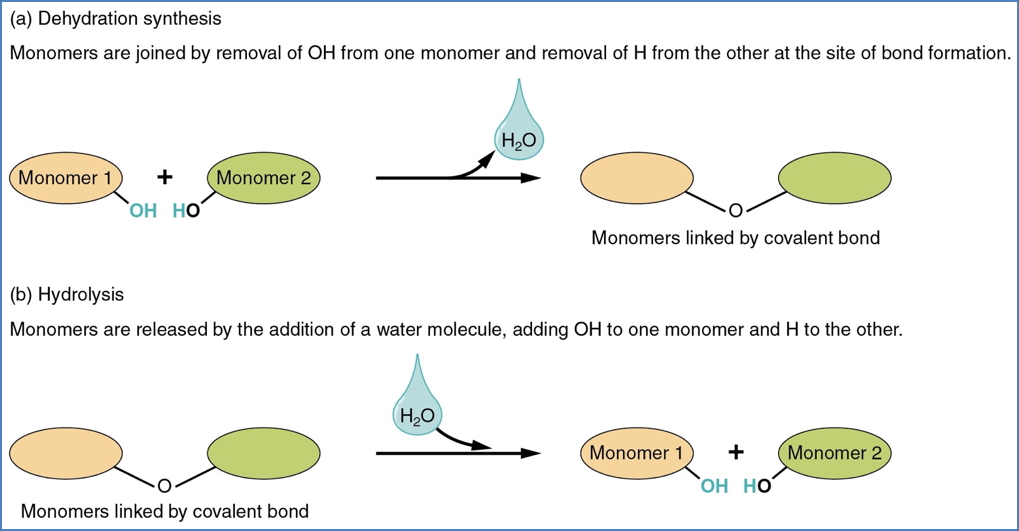Table of Contents
Overview – Nucleic Acids
Nucleic acids are essential biological macromolecules responsible for the storage, transmission, and expression of genetic information. They encode the instructions for protein synthesis and determine inherited traits in all forms of life. Comprised of long chains of nucleotides, nucleic acids—DNA and RNA—form the molecular basis of heredity and underpin every aspect of molecular biology and medicine.

Definition
Nucleic acids are biopolymers composed of nucleotide monomers. They carry and express the genetic code in all living organisms. Each nucleotide consists of:
- A nitrogenous base
- A sugar molecule (ribose or deoxyribose)
- A phosphate group

Structure and Components
Nucleotide Bases
- Adenine (A) → Bonds only with Thymine (T)
- Guanine (G) → Bonds only with Cytosine (C)
- Thymine (T) → Found only in DNA
- Uracil (U) → Replaces Thymine in RNA
- Cytosine (C)
Nucleotides are linked via phosphodiester bonds forming a sugar-phosphate backbone, with bases projecting inward to form complementary base pairs.

Functions of Nucleic Acids
- Provide the genetic blueprint for protein synthesis
- Encode phenotypes and traits
- Control cell function via gene regulation
- Enable heredity and the transmission of genetic material to offspring
- Serve as the molecular foundation of evolutionary fitness
Types of Nucleic Acids
DNA – Deoxyribonucleic Acid
- Double-stranded helix
- Found in the cell nucleus
- Long-term, stable storage of genetic information
- Encodes all proteins necessary for cellular function
- Contains bases: A, T, C, G
RNA – Ribonucleic Acid
- Single-stranded
- Functions as an intermediary between DNA and protein synthesis machinery
- Contains Uracil (U) instead of Thymine (T)
- Types of RNA:
- mRNA – Messenger RNA (carries code to ribosomes)
- tRNA – Transfer RNA (brings amino acids during translation)
- rRNA – Ribosomal RNA (structural component of ribosomes)

Polymerisation and Breakdown
Dehydration Synthesis
- Joins individual nucleotides via the removal of a water molecule
- Forms covalent phosphodiester bonds between sugar and phosphate groups
Hydrolysis
- Water is added to break the covalent bond between nucleotides
- Facilitates breakdown of DNA or RNA during nucleotide recycling or enzymatic cleavage

Summary – Nucleic Acids
Nucleic acids are foundational macromolecules that store and express genetic information in the form of DNA and RNA. They guide protein synthesis, determine traits, and enable genetic continuity across generations. All of molecular biology stems from these biopolymers. For a broader context, see our Cell Biology & Biochemistry Overview page.